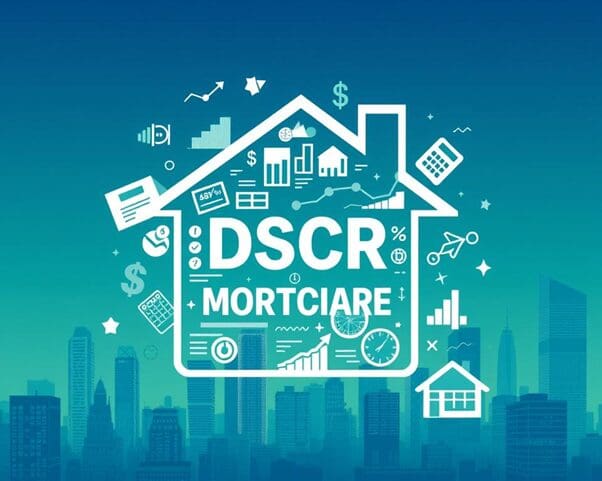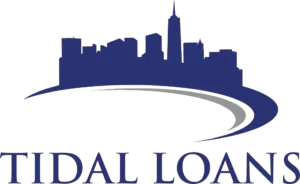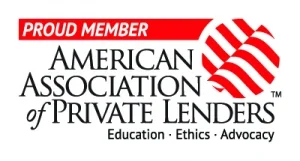Ever thought about getting a mortgage based on your property’s income, not your own?
DSCR loans, or Debt Service Coverage Ratio loans, are a game-changer for real estate investors. They’re different from regular mortgages because they look at the property’s cash flow, not your income. This makes them a great option for those who need creative financing solutions. These non-qualified mortgage loans focus on cash flow lending, offering a fresh approach.

Key Takeaways
- DSCR loans need a debt service coverage ratio of 1.2 to 1.25.
- These loans let you finance based on rental property cash flow, not your income.
- Non-qualified mortgage loans have higher loan-to-value ratios than traditional loans.
- DSCR loans often have lower interest rates than regular loans.
- They require less paperwork and have quicker verification, which is a big plus.
Introduction to DSCR Loans
DSCR loans are a special way to finance investment properties. They look at the property’s income, not the investor’s. This is key for those wanting to invest in commercial real estate or rental properties. The debt service coverage ratio (DSCR) is crucial for getting a loan.
Overview of DSCR
The debt service coverage ratio (DSCR) checks if a property can pay its debts. It compares the property’s net operating income (NOI) to its total debt service (TDS). If the DSCR is over 1.0, the property makes more money than it owes, showing lenders it’s profitable.
“A key metric, DSCR, signifies the income a property can generate to cover its debt obligations, making it an essential element for any real estate investor.”
The Rise of Non-QM Loans
Non-QM loans, like DSCR mortgages, are changing real estate financing. They help those who don’t qualify for regular mortgages, like self-employed people and gig workers. These loans offer flexible terms and unique ways to qualify.
- Self-employed individuals can get rental property loans without the usual paperwork.
- Gig workers find non-QM loans attractive because they don’t need to prove income as much.
- Foreign nationals benefit from non-QM loans because they accept income from abroad.
Understanding these points helps investors use non-QM loans like DSCR loans. This way, they can grow their real estate and reach their financial goals.
How Does a DSCR Loan Work?
A DSCR loan is special because it helps investors qualify for rental property investments in a unique way. It doesn’t rely on personal income like regular loans do. Instead, it looks at the rental property’s cash flow. This is great for those with non-traditional income verification.
Qualifying Based on Rental Property Cash Flow
DSCR loans work by checking if the property can pay for the mortgage. If the property’s income is enough to cover the mortgage, the investor gets the loan. This ensures the property can handle its debt.
DSCR Calculation Formula
The DSCR calculation is the heart of DSCR loans. It’s simple:
- DSCR = Net Operating Income (NOI) / Total Debt Service
- Total Debt Service includes principal, interest, taxes, insurance, and association dues (PITIA).
A DSCR of 1.0 means the property’s income just covers its debt. But lenders want a DSCR of 1.2 or higher. This means the property makes at least 20% more than it needs to.
DSCR loans are perfect for those looking to invest in rental properties. They offer a different way to finance, focusing on the property’s income. This makes them accessible to more investors.
Benefits of DSCR Loans for Real Estate Investors
DSCR loans give investors a lot of financial flexibility. They make it easier to qualify by looking at the property’s cash flow. This way, investors can focus on the property’s earning potential.
These loans also need less paperwork than regular loans. This means investors can get approved faster. Plus, DSCR loans help investors get jumbo real estate loans for big properties.
Investors usually need to put down 20% to 30% for DSCR loans. But, the benefits are worth it. DSCR loans let investors finance more properties than regular loans do. This is great for growing an investment portfolio.
But, there are downsides. Investors might face prepayment penalties and higher interest rates. Rates can be between 6.125% and 9.5%. Still, the benefits of DSCR loans, like not needing to show personal income, make them attractive.
In short, DSCR loans are a powerful tool for investors. They offer easy financing for many properties, including jumbo real estate loans. This supports a wide range of investment strategies.
Understanding Debt Service Coverage Ratio (DSCR)
The Debt Service Coverage Ratio (DSCR) is key for checking a rental property’s health. It shows if the property can pay its debts. Investors use it to make sure their money is safe.
What is DSCR?
DSCR compares a property’s income to its debt payments. A DSCR of 1.0 means income equals debt. A ratio above 1.0 is good, below 1.0 is bad.
Calculating DSCR
The DSCR formula is simple:
DSCR = Net Operating Income (NOI) / Total Debt Service
For example, if a property makes $450,000 and owes $250,000, its DSCR is 1.8. This shows if the property can handle its debt. You need to know the property’s income and expenses to figure this out.
A Good DSCR Ratio
A good DSCR is over 1.25. This means the property makes 25% more than it owes. Lenders like this because it means the property is stable.
The U.S. Small Business Administration (SBA) wants a DSCR of at least 1.15 for loans. This shows how important DSCR is for checking if a property is financially sound.
To learn more about DSCR and how it affects loans, check out this link.
Watching DSCR over time helps investors make better choices. It lets them see how to improve their DSCR and make more money.
What is a DSCR Loan and How Does It Work?
A DSCR loan is a special financial product for real estate investors. It’s different from regular loans because it doesn’t require checking your income. Instead, it looks at how much money your rental property makes. This is great for investors who have a lot of tax write-offs and business deductions.
The main thing about a DSCR loan is how it focuses on your property’s income. To qualify, your property’s income must be enough to pay off its debts. The best ratio is 1.25 or higher, meaning your property makes 25% more than it needs to cover expenses.
DSCR loans are perfect for investors who want to grow their portfolios fast. The DSCR for expanding investment portfolios is flexible. You can get as many loans as you need, which means you can finance many properties at once.
To get a DSCR loan, you need a good credit score of at least 620. You also need to put down 20% of the property’s price, but some lenders might accept less. Loans can be from $100,000 to $3 million. The loan-to-value ratio must be 80% or less. So, your property must make enough money to cover its mortgage and other costs.
Getting a DSCR loan is easier because it looks more at your property’s income than at your personal income. This makes it easier for investors to get, even if they don’t have a lot of money. The good terms and requirements help investors grow their portfolios quickly.
Eligibility Requirements for DSCR Loans
When looking for a DSCR loan, knowing what you need is key. This includes both what the lender looks for in you and the property itself. These details help investors understand what they need to qualify for a loan.
Borrower Qualifications
Lenders focus more on your credit than your income for DSCR loans. You’ll need a credit score of at least 660. Better scores can get you a bigger loan.
You’ll also need to put down 20% to 25% of the property’s cost. Keeping your finances stable is important. Even though your income isn’t checked much, good credit is crucial.
Property Eligibility
What the property can do is also important. It must make enough money to cover the loan and other costs. Lenders want a Debt Service Coverage Ratio of 1.2 to 1.5.
Many types of properties can get DSCR loans. This includes houses, apartments, and office buildings. Properties that can make more money and have lower loan-to-value ratios are more likely to qualify.
Types of Properties Financed by DSCR Loans
DSCR loans are a flexible financing option for income-generating real estate. They work for single rental units and multi-family structures. This makes them suitable for both small and large investors.
Multi-unit financing is a big plus with DSCR loans. They support properties with more than four units. This lets investors grow their portfolios with stable cash flow.
Multi-family homes are especially popular. They offer more cash flow than single-family homes.
DSCR loans are also great for vacation rental investments. These properties in tourist spots can bring in good money. But, remember, DSCR doesn’t count costs like furniture and essentials.
Commercial spaces that rent out reliably are also covered. They must meet certain criteria, but they’re a good way to diversify your investments.
In short, DSCR loans are very useful for financing different types of income-generating real estate. They’re perfect for multi-unit financing, vacation rental investments, and more. This opens up a lot of opportunities for making money.
Comparison Between DSCR Loans and Conventional Loans
Choosing between DSCR loans and conventional loans requires understanding their differences. Both have unique criteria for different needs.
Documentation Requirements
One key difference is in documentation needs. Conventional loans ask for lots of paperwork, like payslips and tax returns. This shows the borrower’s steady income and job.
DSCR loans, on the other hand, focus on the property’s income. They don’t need strict proof of personal income. Instead, they look at the property’s debt service coverage ratio (DSCR), aiming for 1.25 or higher.
Loan Approval Process
DSCR loans are often faster to approve than conventional loans. This is because they focus on the property’s income. This makes the process quicker and reduces wait times.
DSCR loans also offer non-traditional financing, allowing up to $5 million even with lower DSCR ratios. Conventional loans, however, take longer to approve. They check more personal financial details and job history.
While DSCR loans have higher interest rates and possible penalties, their flexibility is appealing to investors. Conventional loans, with their lower rates and down payments, are better for those looking to save money.
In the end, the choice between DSCR loans and conventional loans depends on your financial goals. Understanding the differences in documentation and approval can help you make the right choice for your investment and personal situation.
Steps to Obtain a DSCR Loan
Getting a DSCR loan involves several important steps. These steps help investors finance properties that make money. Knowing each step well can boost your chances of getting the loan you need.
Finding a Lender
The first step is to find a lender that knows about non-QM loans, especially DSCR loans. They usually want a credit score of 620 or higher. They might offer better interest rates and longer to pay back because they see less risk than regular loans.
After picking a few lenders, look at what they need and compare their offers. This will help you choose the best one for you.
Calculating DSCR Ratio
Calculating the DSCR ratio is key to getting a DSCR loan. This ratio compares the property’s rental income to its mortgage debt. Things like rental income, expenses, and how often it’s empty affect this ratio.
A good DSCR ratio is 1.25 or higher. This means the property makes 25% more than it needs to cover its debt. Make sure your rental income and expenses are right to meet the lender’s needs.
Loan Approval and Disbursement
After figuring out the DSCR ratio, you move on to getting the loan approved. You’ll need to send in your application, show proof of rental income, and check if you meet the lender’s standards. If approved, you’ll get your interest rate locked in, finish the loan closing, and start making payments.
These payments will come from the property’s income. This matches the loan’s funding and repayment plan.
By carefully following these steps, investors can smoothly get through the DSCR application process. This ensures they can finance their investment properties well.
Conclusion
DSCR loans are a great chance for those wanting to invest in real estate. They are perfect for people with non-traditional jobs or those who are self-employed. These loans use the income from rental properties to help investors grow their portfolios.
Decisions on these loans are based on how much money the property makes, not on the person’s financial situation. This makes DSCR loans a unique choice.
But, it’s important to know what you’re getting into. DSCR loans often require a 20-25% down payment. The interest rates are also higher, by 0.5% to 3% compared to regular loans. Closing costs can be 2% to 5% of the loan amount.
Keeping a good DSCR ratio is key. A ratio of 1.25 to 1.5 means the property makes 25% to 50% more than the mortgage payments. This extra money helps cover unexpected costs. But, if the property has vacancies or bad tenants, it can hurt the cash flow and loan payments.
If you’re looking to grow your real estate portfolio, DSCR loans are worth considering. They can help you expand your investments with the right properties and strong rental income. For those who qualify, DSCR loans can be a big help in reaching financial goals and increasing income from properties.


